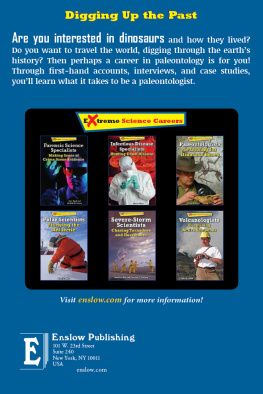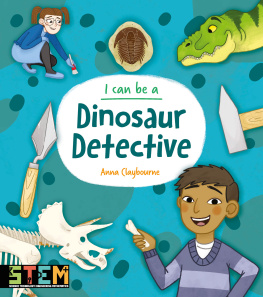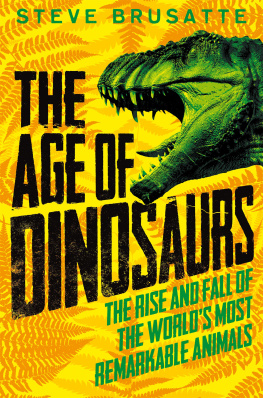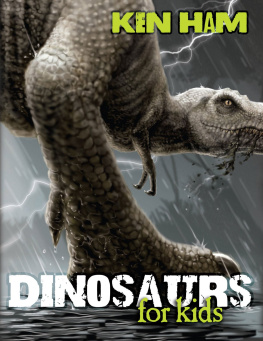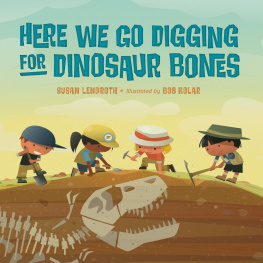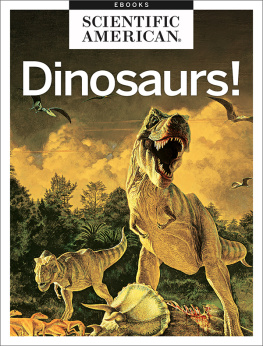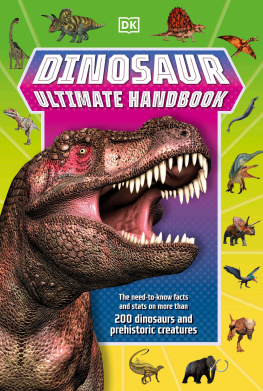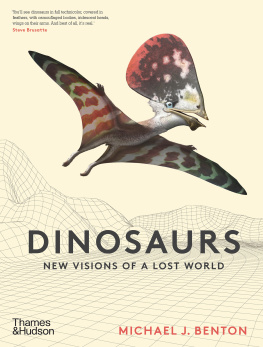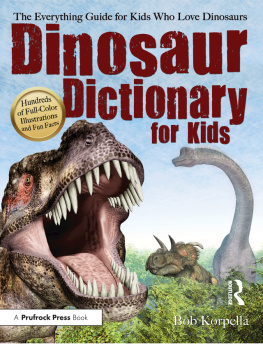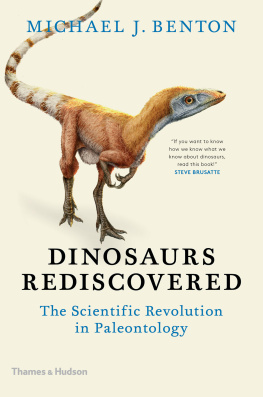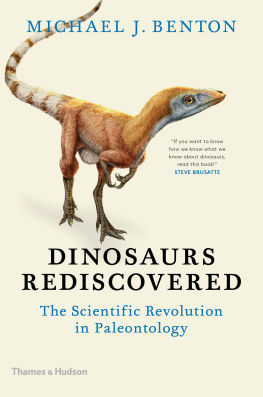Published in 2016 by Enslow Publishing, LLC
101 W. 23rd Street, Suite 240, New York, NY 10011
Copyright 2016 by Enslow Publishing, LLC
All rights reserved.
No part of this book may be reproduced by any means without the written permission of the publisher.
Library of Congress Cataloging-in-Publication Data
Holmes, Thom, author.
Paleontologists : searching for dinosaur bones / Thom Holmes.
pages cm. (Extreme science careers)
Summary: Discusses careers in paleontology, including education, training, specialties, and salariesProvided by publisher.
Audience: Ages 12+.
Audience: Grades 7 to 8.
Includes bibliographical references and index.
ISBN 978-0-7660-6964-0
1. PaleontologyJuvenile literature. 2. DinosaursJuvenile literature. 3. PaleontologistsBiographyJuvenile literature. 4. PaleontologyVocational guidanceJuvenile literature. I. Title.
QE714.5.H635 2016
560.23dc22
2015011325
Printed in the United States of America
To Our Readers: We have done our best to make sure all Web site addresses in this book were active and appropriate when we went to press. However, the author and the publisher have no control over and assume no liability for the material available on those Web sites or on any Web sites they may link to. Any comments or suggestions can be sent by e-mail to .
Portions of this book originally appeared in the book Dinosaur Scientist: Careers Digging Up the Past.
Photo Credits: .
Cover Credits: Mario Jose Bastos Silva/Shutterstock.com (background);Timothy R. Nichols/Shutterstock.com (paleontologist).
Contents
Introduction
Dinosaurs of Asia
Dinosaurs Down Under
Colossal Dinosaurs From Argentina
Desert Dinosaurs of Africa
Island Dinosaurs of Madagascar
Walking Fish: Early Land Animals From the Canadian Arctic
Making a Difference in Paleontology
Appendix: Paleontology: Jobs at a Glance
Chapter Notes
Glossary
Further Reading
Index
Paleontologists examine clues left behind in fossils in order to learn more about prehistoric creatures like Tyrannosaurus Rex, pictured here.
Introduction
P aleontologists have a lot in common with detectives. Paleontologists are scientists who study the fossils of animals that lived long ago. But instead of solving crimes like a detective does, paleontologists solve the mysteries of the distant past by seeking clues in the earth. Using such clues, these detectives not only piece together the bones of extinct creatures but also an idea of how these creatures lived, struggled to survive, and died.
Paleontology is an exciting career that involves many talents. The challenges of finding fossils in the wild, the rigors of camping in the wilderness, and the preparation and understanding of fossils are all part of the careers of the leading paleontologists described in these pages.
Digging Up Clues
The word fossil means something dug up in Latin. A fossil is any indication of an organism preserved in the layers of the earth. Organisms of all kinds may become fossils, from the smallest plant cells to the largest animals on the planet. Imprints and other traces of organisms may also become fossilized, such as the footprints of animals or the texture of tree bark. But the making of a fossil is a rare event. The creatures that we know about from fossils only represent a tiny fraction of the many millions of individual organisms that have ever existed.
The most familiar fossils are the bones of extinct creatures. These fossils formed when skeletons, shells, teeth, and other hard body parts were preserved by being trapped in mud and sand in layers of the earth. There are also several kinds of fossils produced by other natural processes. These include trace fossils, which provide clues to the presence of ancient organisms. The footprint of a dinosaur is one example of a trace fossil. Such footprints were made in the mud and then preserved in rock when the mud dried. Other examples of trace fossils include impressions of skin, feathers, or hair from extinct creatures.
Whatever type they may be, all fossils are windows into prehistoric life. Fossils reveal the many different kinds of life that once existed. They also show that all types of organisms eventually become extinct. Explaining the reasons for extinction is one of the great detective stories of paleontology. In learning about the reasons for extinction, paleontologists come face-to-face with a great detective story that is still being written. By investigating the disappearance of past life, paleontologists also explore the kinds of threats that may affect the future of humans and other creatures in todays world. To learn about the future, one must know something about the past.
This dinosaur footprint was preserved in mud that hardened over time. It is known as a trace fossil.
Chapter 1
Dinosaurs of Asia
D r. Mark Norell is an American paleontologist and curatorin-charge of fossils at the renowned American Museum of Natural History (AMNH) in New York. His job is to help collect, organize, study, and care for the museums vast store of fossils of reptiles, amphibians, and birds. Among these fossils is one of the worlds most celebrated collections of dinosaur skeletons.
As fate would have it, rather than digging dinosaurs in his home country of America, Norells investigations have taken him to many far-flung lands. He is widely known as an expert about dinosaurs and fossil birds from Central Asia and China. In any given work year, his schedule is equally divided between expeditions to faraway locations and supervising a staff of fifty scientists and technicians from his office in New York.
If youre going to find really great fossils, you must go to places where nobodys ever been before, explains Norell. And if nobodys ever been there before, theres usually a reason for it. One such place is Mongolia, a vast, largely uncharted country in Central Asia. The region is remote, there are few roads, and the weather can be extreme. It is not an easy place to bring a team to dig dinosaurs.
Norell has been a part of many fossil-hunting expeditions that were the first to describe spectacular dinosaur discoveries. These include Mononykus (one claw), a three-foot- (one-meter-) long dinosaur with puzzlingly short arms, All these achievements have a connection to Asia, and it is there that Norell has spent much of his time searching for fossils.
A Life in Dinosaur Hunting
Imagine a life that requires you to travel to faraway and remote places every year: to camp in the wilderness, sample foreign cultures, and fight the elements of nature while discovering traces of long-extinct life. Not many people can plan their lives around regularly scheduled trips to the Gobi Desert in Mongolia to search for fossils. Many people might not like making such a difficult trek year after year, but Norell enjoys his work. I love the desert, he explains. Ive worked in deserts all over the world, and weve found some amazing fossils. Everything from animals sitting on top of their nests eggs brooding them to embryos in eggs.

